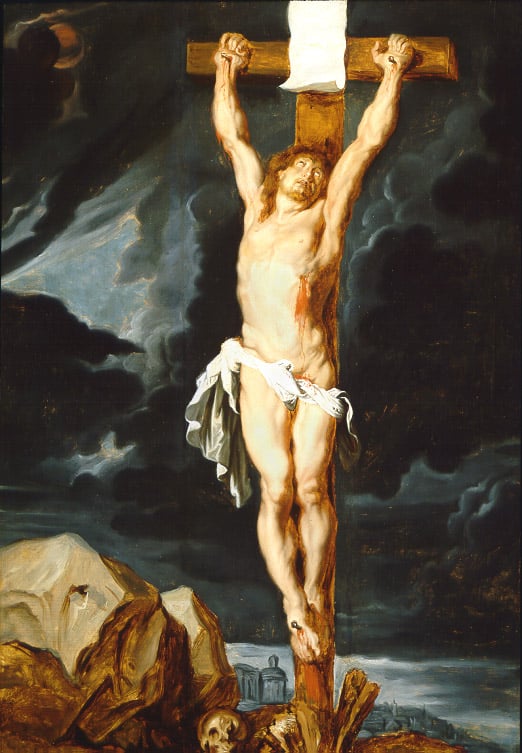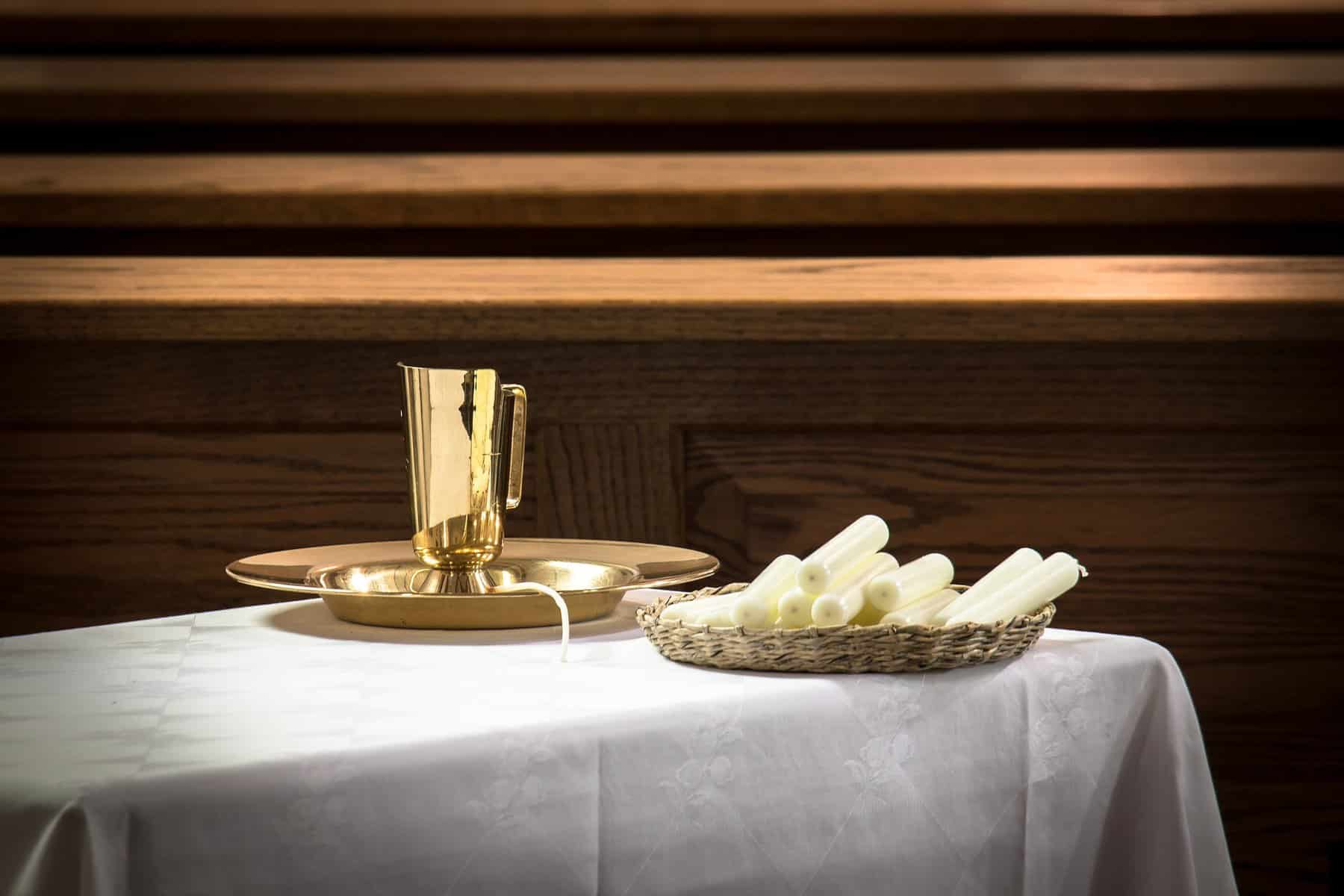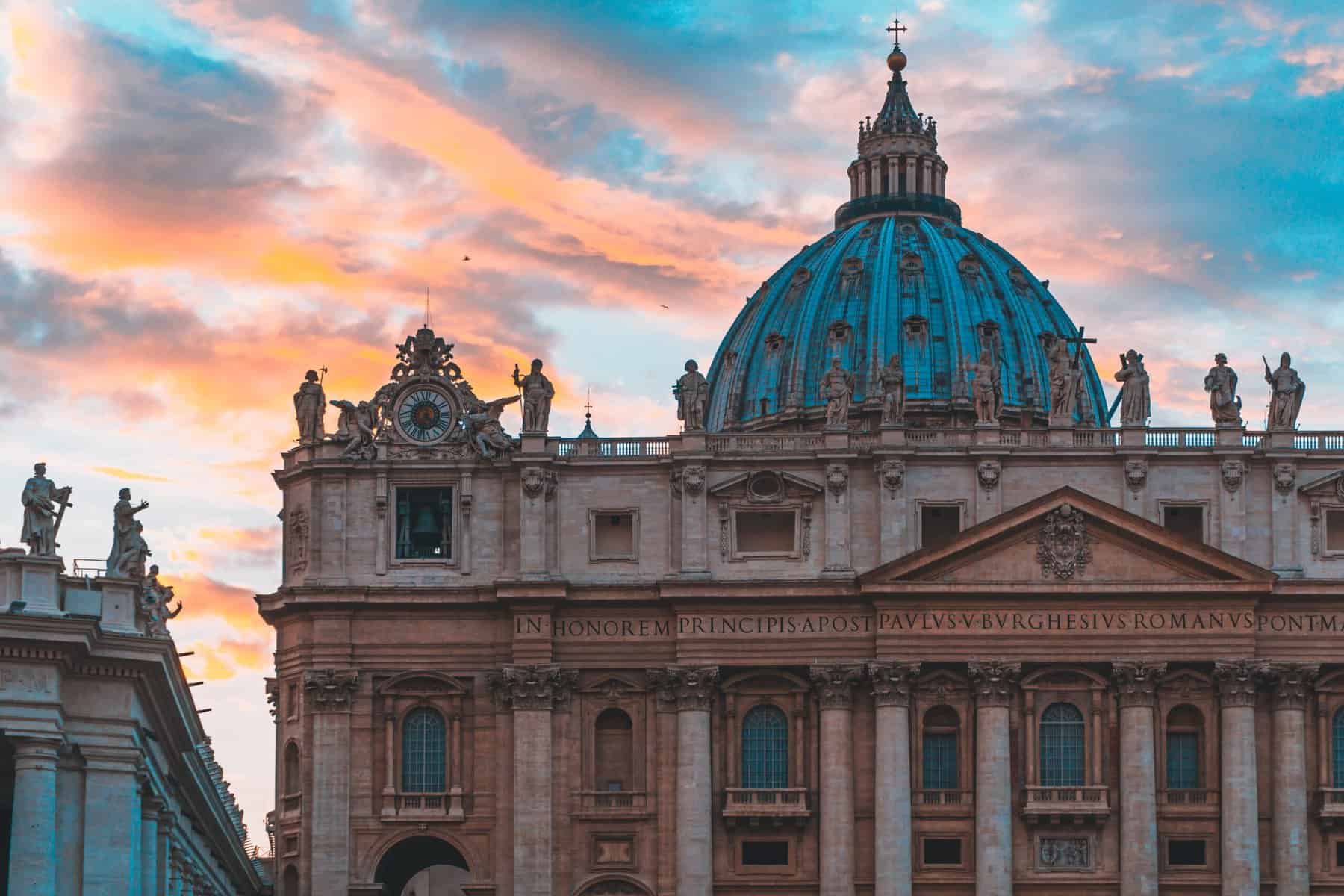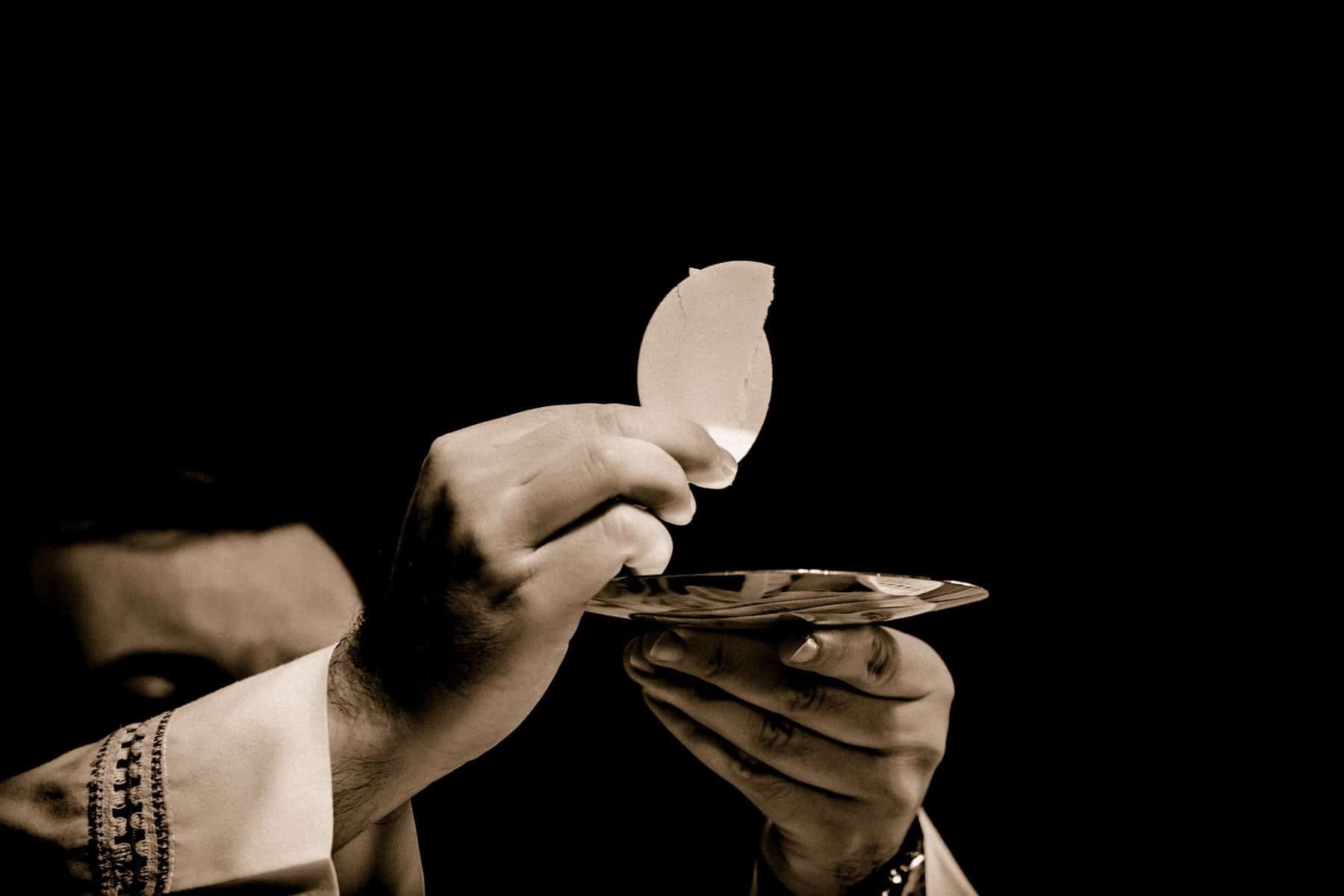The Catholic Church is one of the oldest and largest religious institutions in the world with members across diverse cultures and nations. Roman Catholicism is a denomination of the religion of Christianity. With a staggering following of over 1.3 billion believers, it is essential to delve into the nature and characteristics of the Catholic Church to grasp its historical roots, doctrines and beliefs, organizational structure, practices and rituals, global impact, and contemporary challenges.
Origins of the Catholic Church

The early Christian communities that emerged after the death and resurrection of Jesus Christ trace back to the origins of the Catholic Church. The disciples, led by the apostle Peter, played a crucial role in spreading the teachings of Jesus and establishing Christian communities. In Matthew’s Gospel, Jesus told Peter that the kingdom of God would be built “upon this rock,” and then Jesus gave Saint Peter “the keys of the kingdom of heaven” (Matthew 16:18-19). The Catholic Church views this as symbolic of Peter’s authority and leadership within the Church and considers Peter both a canonized saint and the first Pope.
As Christianity grew, many saw a need for organizational structure. The Church adopted a hierarchical system with a clear chain of authority. Bishops, appointed to oversee specific regions (called dioceses), succeeded the apostles and ensured the preservation of apostolic teaching. Priests, ordained by bishops, served as spiritual leaders within local communities. Deacons assisted in various ministries under the priests.
Christ instituted the sacraments as sacred signs and developed them as channels of God’s grace. Baptism marked initiation into the Christian faith, while the Eucharist, celebrated as the commemoration of Christ’s Last Supper, became the central act of worship. Other sacraments, such as Confirmation, Reconciliation, Anointing of the Sick, Holy Orders, and Matrimony, were introduced to meet specific spiritual needs.
Core beliefs and teachings of the Catholic Church
Central to Catholic belief is the doctrine of the Holy Trinity, which holds that there is one God in three distinct Persons: God the Father, God the Son (Jesus Christ), and God the Holy Spirit. Catholics affirm the divinity of Jesus Christ, recognizing him as the Son of God who became incarnate for the salvation of humanity. The belief in Jesus’ divinity underscores the Church’s understanding of his redemptive work and the significance of his sacrifice on the cross, through which all believers are united as the People of God. These beliefs are agreed upon by the majority, if not all, denominations of Christianity.
Papacy
The Catholic Church views the Pope as the successor of St. Peter, whom Jesus chose as head of his church. The Pope, in his role as the Vicar of Christ, possesses authority and jurisdiction over the Church, particularly in matters of faith, morals, and unity. Catholics believe that the Pope’s authority is derived from his apostolic succession and his special charism (spiritual gift or favor from God) of infallibility when defining matters of faith and morals ex cathedra (with the full authority of his office as Pope). The Second Vatican Council, convened in the 1960s, significantly shaped the modern understanding of the Pope’s role within the Church and its relationship with the world, emphasizing collegiality, ecumenism, and the Church’s engagement in contemporary issues.
Scripture and Tradition
Catholics acknowledge both Sacred Scripture (the Bible) and Sacred Tradition as sources of divine revelation. The Bible is considered the inspired word of God, containing the teachings and accounts of Jesus and Christian history. It includes the Old Testament, which details the history, prophecy, and teachings before the coming of Jesus, and the New Testament, which recounts the life, teachings, death, and resurrection of Jesus Christ, as well as the beginnings of the Church and the teachings of the apostles.
Sacred Tradition, which encompasses the teachings and practices handed down by the apostles and the early Church, is also considered an authoritative guide, significantly influenced by the writings and teachings of the Church Fathers. The Church, through the Magisterium (the teaching authority of the Pope and bishops), has the responsibility of interpreting and safeguarding the deposit of faith found in Scripture and Tradition, guided by the Catechism of the Catholic Church. The Catechism provides a comprehensive exposition of the Catholic faith, detailing its core beliefs, teachings, and moral directives. It serves as an essential resource for understanding Catholic doctrine and practicing the faith according to Church teachings.
Nicene Creed
A foundational expression of Catholic beliefs is encapsulated in the Nicene Creed, formulated during the First Council of Nicaea in AD 325. When the Christian church was first forming, councils of leading theologians met to define the faith and abolish heretical teachings that were emerging. The Nicene Creed articulates the essential tenets of the Christian faith, including the nature of the Trinity, the divinity of Christ, and the belief in one, holy, catholic (worldwide), and apostolic Church. This creed serves as a unifying statement of faith for the Catholic Church and many other Christian churches, emphasizing doctrinal coherence and theological unity.
The sacraments and their significance
The Catholic Church celebrates seven sacraments, each considered to be instituted by Christ to communicate his grace to the faithful. The sacraments are seen as visible signs that confer invisible graces. These rites are recognized as being significant and important in a believer’s faith journey. While some occur often during a believer’s life, others occur only at certain moments. Not every believer will experience all seven sacraments.
Baptism
 The sacrament that initiates a person into the Christian faith and cleanses them of original sin (in keeping with the doctrine that states all human beings have inherited the sin of the first man and woman who rebelled against God in the Garden of Eden).
The sacrament that initiates a person into the Christian faith and cleanses them of original sin (in keeping with the doctrine that states all human beings have inherited the sin of the first man and woman who rebelled against God in the Garden of Eden).
Confirmation
The sacrament that strengthens and seals the baptized person with the gifts of the Holy Spirit.
Eucharist
The sacrament in which the bread and wine become the body and blood of Christ, commemorating his sacrifice and providing spiritual nourishment (in keeping with the doctrine of transubstantiation, “the conversion of the substance of the Eucharistic elements into the body and blood of Christ at consecration, only the appearances of bread and wine still remaining.” according to the Oxford Languages dictionary). This sacrament is repeatedly taken at Catholic services, or Mass.
Reconciliation (Confession)
The sacrament through which individuals receive forgiveness for their sins and are reconciled with God and the Church.
Anointing of the Sick
The sacrament in which the sick or dying are anointed and offered spiritual healing and strength.
Holy Orders
The sacrament through which men are ordained as deacons, priests, or bishops, empowering them to serve and lead the Church.
Matrimony
The sacrament that unites a man and a woman in a lifelong covenant of love and fidelity.
These sacraments are central to the spiritual life of Roman Catholics and mark the different stages of a Catholic’s spiritual journey and are essential for the fullness of Christian life.
Ethical principles and the pursuit of social justice
The Catholic Church’s moral teachings are rooted in the belief in the inherent dignity of every human being, created in the image and likeness of God. These teachings are based on the principles of love, justice, compassion, and respect for human life at all stages. The Church encourages its members to strive for personal holiness and to promote social justice by addressing issues such as poverty, inequality, discrimination, and the protection of human rights.
The Catholic Church’s doctrines and beliefs provide a framework for moral guidance, spiritual growth, and communal worship. These teachings shape the lives of believers and guide their relationships with God, their neighbors, and the wider world. Through the sacraments and moral principles, the Church seeks to lead its members to salvation and foster a just and compassionate society.
The Pope and the Vatican City
 At the pinnacle of the Catholic Church’s hierarchy stands the Pope. He is also known as the Bishop of Rome, the Supreme Pontiff, or Vicar of Christ. The Pope is considered the successor of St. Peter and holds primacy of authority over the entire Catholic Church. He is recognized as the spiritual leader and the visible head of the Church. The Pope resides in Vatican City, an independent city-state within Rome that serves as the administrative and spiritual center of the Catholic Church.
At the pinnacle of the Catholic Church’s hierarchy stands the Pope. He is also known as the Bishop of Rome, the Supreme Pontiff, or Vicar of Christ. The Pope is considered the successor of St. Peter and holds primacy of authority over the entire Catholic Church. He is recognized as the spiritual leader and the visible head of the Church. The Pope resides in Vatican City, an independent city-state within Rome that serves as the administrative and spiritual center of the Catholic Church.
The College of Cardinals and the Roman Curia
Assisting the Pope in the governance of the Church is the College of Cardinals. Cardinals are appointed by the Pope and are chosen from among the bishops, priests, and other eminent figures within the Church. Their primary responsibility is to serve as advisors to the Pope and participate in the election of a new Pope when the need arises. This reflects their roles as key Church leaders. The College of Cardinals reflects the diversity of the global Church.
The Roman Curia, comprised of various administrative departments and offices, assists the Pope in managing the affairs of the Church. These departments include the Secretariat of State, the Congregations, the Tribunals, the Pontifical Councils, and other bodies. The Roman Curia ensures the smooth functioning of the Church’s administrative and pastoral activities on a global scale.
Dioceses, bishops, priests, and religious orders
The Catholic Church is divided into geographic regions known as dioceses, each overseen by a bishop. Bishops are successors of the apostles and hold the fullness of the sacrament of Holy Orders. They have the authority and responsibility to shepherd and guide the faithful within their respective dioceses. Bishops are entrusted with teaching, sanctifying, and governing their local Churches.
Working closely with the bishops are priests, who serve in parishes or other pastoral assignments. Priests are ordained by bishops and are responsible for administering the sacraments, preaching the Word of God, and providing spiritual guidance to the faithful.
In addition to diocesan clergy, the Catholic Church encompasses various religious orders, both male and female. These monks and nuns live in monasteries led by an Abbot or a convent led by a Mother Superior. These religious orders often comprise individuals who have taken vows of poverty, chastity, and obedience. They live in intentional communities and engage in specific apostolic works or contemplative lifestyles. Religious orders may focus on education, healthcare, social services, evangelization, or other specialized ministries.
The role of clergy and laity in the Church
Through the sacrament of Holy Orders, men are ordained as deacons, priests, or bishops. Deacons assist in liturgical functions, proclaim the Gospel, and engage in acts of charity. Priests serve as the spiritual leaders of parishes. They may also be engaged in other pastoral ministries, celebrating the sacraments and providing spiritual guidance. Bishops, considered successors of the apostles, hold the highest degree of Holy Orders. They are responsible for the governance and pastoral care of their dioceses.
The laity, comprising the majority of the Church’s members, play a crucial role in the Church’s mission and ministries. Through their baptism, the laity are called to live out their faith in their families, workplaces, and communities. They actively participate in the life of the Church by serving in various ministries, such as catechesis (“religious instruction given to a person in preparation for Christian baptism or confirmation, typically using a catechism,” Oxford Languages dictionary), youth programs, social outreach, and charitable works. The laity’s involvement is vital in promoting the Gospel message and building a vibrant and engaged Catholic community.
The structure and hierarchy of the Catholic Church provide a framework for effective governance, pastoral care, and the transmission of the faith. It ensures unity in doctrine and practice while allowing for diverse expressions of faith within the Church. The collaboration between the Pope, the College of Cardinals, bishops, priests, and the laity enables the Church to fulfill its mission of spreading the Gospel and serving the spiritual and material needs of believers.
The liturgical life of the Catholic Church
 The Catholic Mass holds a central place in Catholic worship. It is a sacred ritual that commemorates and represents the Last Supper, where Jesus instituted the Eucharist. The Mass consists of two main parts. The Liturgy of the Word is when Scripture readings are proclaimed and a homily (sermon) is given. During the Liturgy of the Eucharist, the celebrant consecrates the bread and wine, which become the body and blood of Christ. Catholics believe that by participating in the Eucharist, they enter into a profound union with Christ and the entire Church.
The Catholic Mass holds a central place in Catholic worship. It is a sacred ritual that commemorates and represents the Last Supper, where Jesus instituted the Eucharist. The Mass consists of two main parts. The Liturgy of the Word is when Scripture readings are proclaimed and a homily (sermon) is given. During the Liturgy of the Eucharist, the celebrant consecrates the bread and wine, which become the body and blood of Christ. Catholics believe that by participating in the Eucharist, they enter into a profound union with Christ and the entire Church.
The Catholic Church follows a liturgical calendar, which structures the annual rhythm of worship and reflection. The liturgical year revolves around the major events in the life of Christ. Advent (preparation for the birth of Jesus), Christmas (celebration of Jesus’ birth), Lent (preparation for Easter through penance and prayer), Easter (commemoration of Jesus’ resurrection), and Ordinary Time (periods of reflection and growth outside the major seasons) are all observed. Additionally, feast days honor saints, angels, and important events in salvation history, enriching the spiritual journey of believers.
Devotional practices and popular piety
Prayer is a fundamental aspect of Catholic spirituality. Catholics engage in personal and communal prayer, seeking a deepening relationship with God. The Rosary is a popular devotion that involves meditating on key moments in the life of Christ and the intercession of the Virgin Mary, the Mother of Jesus. Catholics believe saints now with Christ in heaven, and specifically Mary, are available to intercede in heaven with God for those here on earth. Believers often observe novenas, nine days of focused prayer, for specific intentions or in preparation for feasts or important events.
Pilgrimage holds a significant place in Catholic devotional practices. Pilgrims visit holy sites associated with Jesus, Mary, the apostles, and revered saints to express their faith and draw closer to God. Popular pilgrimage destinations include Jerusalem, Rome, Lourdes, and Fatima. Additionally, Catholics venerate saints, viewing them as exemplars of faith and sources of inspiration. Believers venerate relics, objects associated with saints or Jesus, as tangible connections to the divine. These objects remind believers of the presence of God’s grace and the communion of saints.
Catholic practices and rituals provide a tangible expression of faith, facilitating encounters with the divine and fostering spiritual growth. The Mass is the pinnacle of Catholic worship. Believers participate in the mystery of Christ’s sacrifice and receive his body and blood in the Eucharist. The liturgical year and feast days guide the faithful through the seasons of the Church. The liturgical calendar provides opportunities for reflection, celebration, and deepening of faith. Devotions, such as the Rosary and novenas, enable personal and communal prayer. Pilgrimages and the veneration of saints and relics offer avenues for encountering the sacred in physical places and objects. Together, these practices and rituals enrich the spiritual lives of Catholics and strengthen their connection to God and the Church.
Major milestones and challenges throughout history
In 1054, a significant schism occurred in the Church. This led to the establishment of the Eastern Orthodox Church and the Roman Catholic Church. The primary points of contention included differences in liturgical practices, the authority of the Pope, and theological nuances. The result was a division that led to the formation of two distinct branches of Christianity. The Roman Catholic Church became known as the Western Church and the Orthodox Church as the Eastern Church. Each has unique traditions, practices, and leadership structures.
In the 16th century, the Protestant Reformation emerged as a response to abuses and doctrinal disagreements within the Church. Figures such as Martin Luther, John Calvin, and Ulrich Zwingli called for reform. They challenged both the authority of the Pope and the Church’s teachings. This led to the fragmentation of Christianity into various Protestant denominations, each with its interpretations of faith and practices.
The Reformation had a profound impact on the Catholic Church. It prompted the Council of Trent (1545-1563). This council addressed criticisms raised by the reformers and reaffirmed Catholic doctrines while implementing reforms within the Church. The Counter-Reformation, a period of revitalization and renewal, emphasized spiritual growth, disciplined clergy, and the promotion of Catholic teachings.
Periods of expansion, internal challenges, and responses to external influences mark the historical context of the Catholic Church. Through these significant milestones and challenges, the Church continued to shape its identity and strengthen its theological and organizational foundations.
The Catholic Church’s impact on global society
The Catholic Church has a long history of establishing educational institutions, ranging from primary schools to prestigious universities. They provide education that is deeply rooted in Catholic values and teachings. Additionally, they contribute to the intellectual, moral, and holistic development of students. Catholic educational institutions often commit themselves to academic excellence, character formation, and the promotion of personal values.
Similarly, the Catholic Church operates an extensive network of healthcare institutions, including hospitals, clinics, and charitable organizations. These institutions serve communities worldwide, especially those in underserved areas, by providing quality healthcare services, promoting public health initiatives, and addressing the medical needs of the vulnerable and marginalized. The principles of human dignity, compassion, and the sanctity of life often guide Catholic healthcare institutions.
The Church actively engages in humanitarian efforts and social services globally, inspired by its mission of love and service. Through various organizations, initiatives, and religious orders, the Church works to alleviate poverty, promote social justice, and respond to humanitarian crises. It provides aid and support to those affected by natural disasters, conflicts, and other emergencies. The Church also runs numerous social service programs. These address issues such as homelessness, hunger, refugee resettlement, rehabilitation of prisoners, and care for the elderly and disabled.
Contemporary challenges and controversies
The Catholic Church has faced significant challenges due to the occurrence of clergy sexual abuse scandals. These abuses have deeply affected survivors and shaken the faith of many believers. The Church acknowledges the gravity of these crimes and the betrayal of trust involved. In response, it has implemented measures to prevent abuse, protect vulnerable individuals, and hold perpetrators accountable. These measures include mandatory reporting, background checks for clergy and employees, the establishment of review boards, and the provision of support and assistance to survivors.
The issue of women’s roles and representation in the Catholic Church has been a subject of ongoing discussion and debate. Some individuals and groups advocate for greater inclusion of women in decision-making processes, leadership positions, and ministries within the Church. They call for a deeper theological exploration of women’s roles and the possibility of ordaining women as deacons. The Church continues to engage in dialogue and reflection on this topic. It seeks ways to further incorporate women’s gifts and perspectives into its structures and ministries.
Responses to contemporary issues and controversies reflect the evolving nature of the Catholic Church. While the Church’s impact on education, healthcare, and humanitarian efforts is commendable, it recognizes the need for ongoing self-examination, reform, and a renewed commitment to addressing social injustices. By addressing these challenges with transparency, accountability, and a commitment to justice, the Catholic Church strives to strengthen its mission of service, promote the common good, and be a force for positive change in global society.
Conclusion
The Catholic Church, with its rich history, diverse doctrines, hierarchical structure, and profound rituals, holds a prominent position in global society. While the Church faces challenges and controversies, it continues to evolve and adapt to the changing world while upholding its core principles. The future of the Catholic Church remains intertwined with its ability to navigate these challenges and promote unity, inclusivity, and spiritual growth.
What do you think? Please share your thoughts below.
Too often, people answer faith questions with dogmatic certitude and neglect the historic diversity and complexity of Christian ideas. The Questions Project is a resource that responds to questions about faith, history, and scripture in a way that honors the historical diversity and complexity of Christian thought. But, this is a work in progress and we want your help. Please provide feedback. We are particularly interested in knowing what we may have missed and how we can improve our responses. Please keep all comments kind or risk deletion.
